| In building this
kit, I followed my usual rules: never place any PE part until every
plastic piece is safely glued (or the PE parts will fall and disappear
forever when the model is manipulated, and there are absolutely no
spares - why. oh why, no manufacturer ever provides some spares of
the tiniest PE parts ?); never glue the fenders until the wheels and
tracks are assembled. The instructions ask you to do the exact opposite
of both rules and I suggest you not to obey.
Another piece of advice, which would
seem superfluous yet it is not - check the number of every single
piece, because many pieces look identical but they are not.
Lower hull, wheels and tracks
Building the lower hull takes the first
3 steps, then you come back to it in steps 10-12. It is more logical
to go immediately from step 3 to step 10 and finish the lower hull
before moving on.
No definite issues here - follow the
instructions closely, check every single piece and you will be fine.
The wheels, idlers, sprockets and return rollers are the less definite
part of the kit: there is quite a bit of flash which needs to be trimmed,
and when placing the tracks around the sprockets you will notice that
the teeth do not fit the corresponding holes on the track links, so
trimming the teeth is the only possible solution.
Unfortunately, the idlers lack the
characteristic eight double holes on both the inner and outer wheels,
which is not surprising given the "limited run" look of
the wheels. Drilling them was out of question, so I left the idlers
as they are. Probably Armory could have solved the problem by casting
them in resin, or with a "double material" approach (plastic
hubs and PE, foldable rims).
Rob
Haelterman adds:
It seems that many M41 had their idler replaced by what looks
to be a roadwheel. This doesn't solve the problem, however, as
an extra roadwheel is not provided in the kit either.
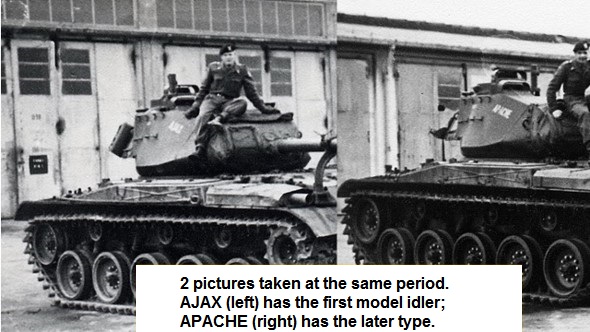
Pictures provided by Marc Mercier.
I did not encounter serious difficulties
with the L&L tracks, considering that the sections made from individual
links do not look identical to the long sections of track provided,
which is something easy to find in many kits (earlier ACE tanks come
to mind).
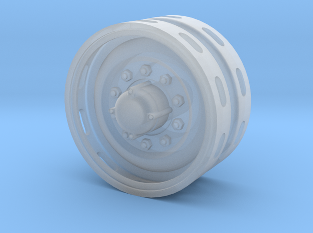
Upper hull and fenders
Building the upper hull takes the most
of the building (steps 4-9).
Piece 14, which is part of the engine
deck to be mounted in step 4, should have 2 vertical panel lines,
which curiously are visible in the instructions but are not there:
you can scribe them with a pin, using the 2 vertical lines in piece
21 as a guide (piece 21 is posterior, so the lines in piece 14 are
in fact the upper continuation of those on piece 21). In doubt, check
the following image:
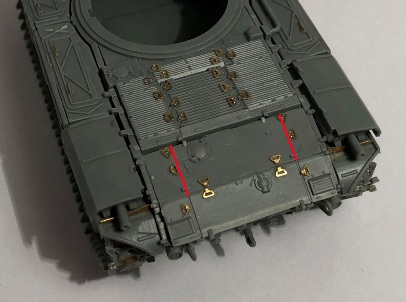
There are many PE parts to place on
the upper hull, so make a deal with the carpet monster beforehand
because every piece flipping away will be lost forever and, as I said,
there are no spares. The trickiest ones are the nearly 30 handles
to glue on the engine deck of 3 different types (pieces 9, 31 and
33), the visors covers near the driver's hatch (4 copies of piece
18) and the locks of the boxes on the fenders (8 copies of piece 3).
PE piece no. 1 has to be plied and
shaped like a box because it will contain the tools. Bending it the
way it should be is not easy without a dedicated PE bending tool.
The M41 had a towing cable on the left
side but it is not provided nor it is suggested to scratchbuild it;
however, although there is nothing about it in the instructions, there
are two non-mentioned pieces (no. 53) which look exactly like the
eyelets of the towing cable, so I assume it was simply forgotten when
drawing the instructions.
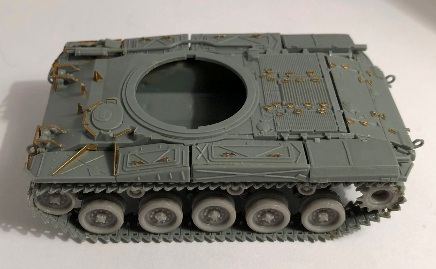 
Turret
The turret takes the last steps of
the building (steps 13-17).
The turret of the M41 was a combination
of both welded and cast construction, which left a very visible oblique
line separating the casted and welded parts of the turret. This characteristic
sign of the M41 is strangely missing amd must be added with some thin
stretched sprue.
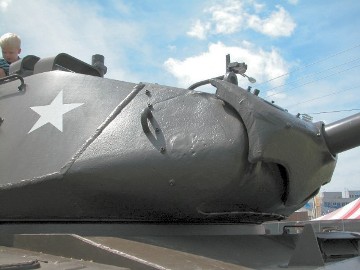
Many M41s had a mantlet canvas cover,
but it is not provided here. It can be scratchbuilt if so desired,
but it would have been nice to have a choice between both mantlets
- with cover and not.
The open/close mechanism of the commander's
hatch is faithfully reproduced and very nice, to the point that I
believe it would be possible to have it working. However, the two
horizontal rods securing the mechanism are not provided and must be
added - an easy task.
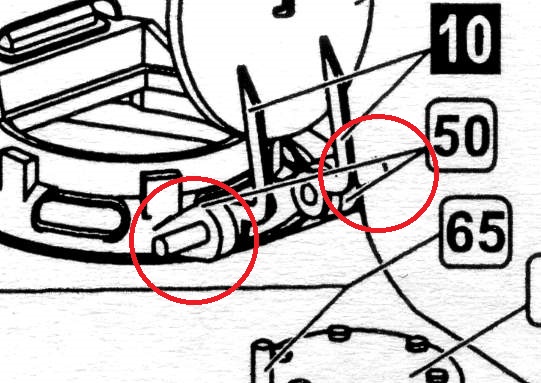
A very appreciated touch is the choice
between placing the two jerry cans which were carried on the rear
part of the turret (with the possibility to have them look better
with 2 PE parts for each, the handles and the cap) or using a foldable
PE part to reproduce just the support for the can. In that case, the
belt must be added with a paper strip.
The Browning MG is supplied as a resin
mini-kit with PE parts. Not a solution I liked very much, because
the MG looks too thin and the parts made in PE look too flat.
M41 Walker Bulldog in Vietnam,
1968
The M41 lived its better moments during
the Vietnam War, because it was the main battle tank of the Army of
the Republic of Vietnam (ARVN) and, as such, it was fundamental in
some critical campaigns, such as Operation Lam Son 719 in Laos, where
the M41s knocked out 22 NVA tanks, six T-54s and sixteen PT-76s. Later,
M41s fought in every battle of the war until the end.
ARVN M41s were of the A3 version, so
this kit (which is labeled as A1/A2) would not be suitable to make
an ARVN tank: however, given the fact that A3s where exteriorly undistinguishable
from A2s, I decided to go on with the project.
Decals are provided for an U.S. Army
M41 in Vietnam from the Headquarters of the 3rd Cavalry Regiment:
technically speaking, there were no U.S. Army M41s in Vietnam, while
the 3rd Cavalry Regiment was stationed in Europe during the 60s. There
is possibly a mistake with the 3d Armored Cavalry Squadron, which
was an ARVN unit so it would not bear any U.S. Army insignia. In doubt,
I would not use that scheme. The absence of an ARVN scheme is not
a serious issue, as most M41s did not show any marking.
ARVN vehicles were painted in the typical
overall Olive Drab used by the U.S. Army during the 60s, very faded
and covered with dirt and the ubiquitous reddish dust typical of Vietnam.
Much external stowage was carried, particularly ammo boxes for the
.50 MG.
 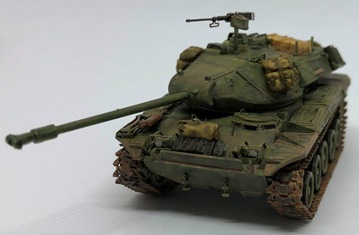
 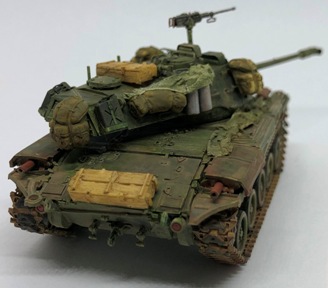
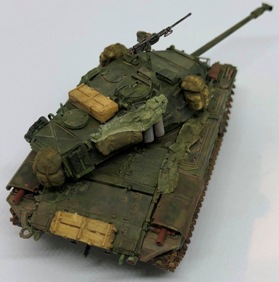 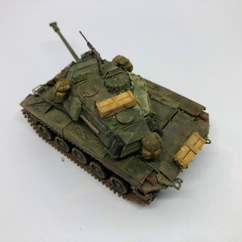
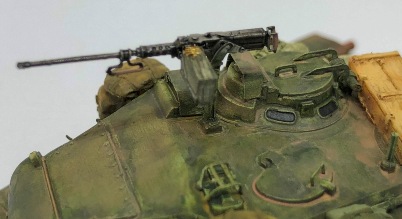
|